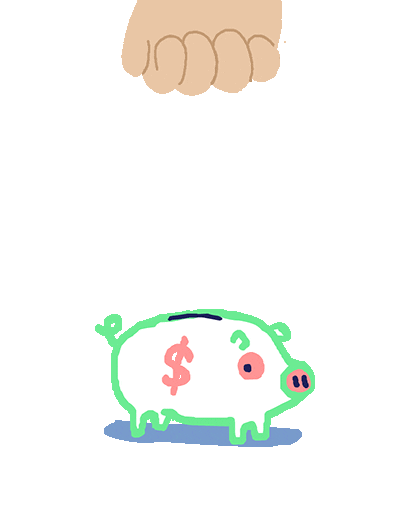 Photo by S Migaj on Unsplash
Photo by S Migaj on UnsplashAre you finally looking to put together your emergency fund? Or perhaps saving for that long-awaited vacation? Maybe you're starting to save for your first and last month’s rent?
Whatever your reason, you'll need a plan for saving your first $1000.
Make A Goal
 This is what you'll keep in mind when you have to make tough decisions. Write down:
This is what you'll keep in mind when you have to make tough decisions. Write down:
Your reason for saving (is this long-term saving, like an emergency fund or retirement? Or planned spending like a vacation or down payment on a new car?)
How much you’d like to have saved
By what date you want to achieve the goal
Determine Your Earnings And Spending
Now it’s time to see if your goal is realistic.
Know how much you earn.
You may have a set salary each month, or your income may fluctuate based on:
number of hours worked
tips
business revenue, etc.
If your income fluctuates, calculate your average income over the last several months.
Example:
Jane is a server and made the following amounts over the last three months:
January: $1900
February: $2350
March: $1975
Therefore the average Jane made over the last three months is $2075 per month.

Know how much you spend.
Calculate your:
Fixed expenses: internet and gas bills, rent, pet expenses, car payments etc.
Variable expenses: food, shopping, entertainment, household items etc.
Check out this Byte for more on expense tracking!
Create A Budget
Do you have anything left over after subtracting your expense from your income? If you do, check to see how long it would take you to save $1000. Is it in line with your goal timeline? If not, you may need to create or tighten your budget.
What's getting in your way of saving? Do you need to:
Earn more?
If you're already spending very little, consider ways you may be able to earn more per month:
Look for a higher paying job
Ask for a raise
Work more hours at your current job
Start a side hustle — babysitting, driving for Uber, dog walking, creating handmade items, teaching night school, etc.
Sell some items you don't use any more
Spend less?
This means having an intentional plan. You can:
Switch to buying off-brand items
Eliminate non-essential spending — spas, dining out, clothes
Cancel subscriptions you don’t use anymore — apps, games, gym
Shop grocery flyers and sales
Switch to free entertainment
Call service providers for options on reducing bills
Restructure your earning and spending habits in a way that's most valuable to you. Keep in mind why you’re saving up, and why it's a meaningful goal.
Now make a new budget that supports your savings goal!
Keep Track
Keep track of how much you spend each week. You can:
Save receipts and write down spending at the end of each day
Use an appto track spending
Develop an envelope and cash system — your monthly budget amounts per category in separate envelopes – once the cash is gone, you're out of budget for that month!
Use whatever method works for you.
Schedule check ins.
Check in with yourself frequently to make sure you’re reaching your savings milestones.
Example:
Joel made a goal to save $1000 over 6 months. He set milestones to save $167 each month.
Month 1 he saved $172
Month 2 he saved $167
Month 3 he saved $150
Quiz
Is Fred on track to reach his savings goal?
Take Action

Now you're ready to start saving! You can do it!
Your feedback matters to us.
This Byte helped me better understand the topic.
